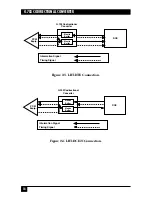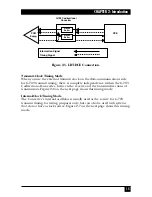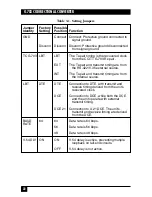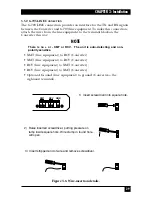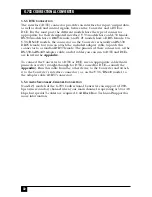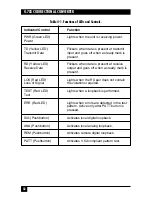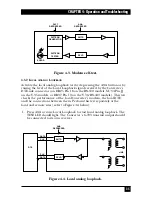
27
CHAPTER 3: Installation
3.5 Connecting Power and Data Cables
After you set the G.703 Codirectional Converter’s internal jumpers, the
Converter is ready to be cabled for operation.
Its electrical connectors are located on its rear panel, as shown in Figures 3-4
and 3-5 below. These consist of a female interface connector labeled “DTE,” a
5-screw terminal block,” and a 3-prong AC or DC inlet. (The AC inlet also
contains an integral fuse compartment.)
The interface connector (M/34, DB15, DB25, or DB25 cabled to DB37)
carries input/output data, clock signals, and control signals between the
Converter and the DCE (for more detailed information, refer to the
Appendix
).
The terminal block has five screws for connecting transmit and receive ITU-
TSS (CCITT) G.703 lines—the transmit pair where XMT is indicated (for
data output from the unit), the receive pair where RCV is indicated (for data
input to the unit), and chassis ground where GND is indicated.
Connect power and data cables to the Converter as described in the following
subsections.
Figure 3-4. Rear panel of the 115-VAC (IC714A-530-R2) and 230-VAC
(IC714AE-530-R2) RS-530 models of the Converter.
Figure 3-5. Rear panel of the –48-VDC RS-530 model of the
G.703 Codirectional Converter (IC714A-48-530-R2).
DTE
XMT
RCV
GND
48V
CHASS
GND
+
-
DTE
XMT
RCV
GND
115 VAC / - 0.2A T 250V


